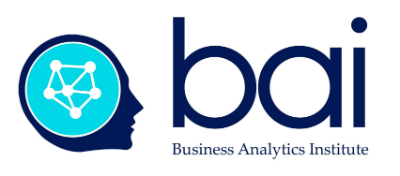Putting AI First

|
How can human and machine intelligence together be leveraged to bring tangible benefits to the business? |
Overshadowed in Davos last month by the constant buzz of the « Fourth Industrial Revolution » and « Human-centered A.I. », artificial intelligence could be read on the lips of most every CEO in attendance.[1] In sharp contrast with the diversity of the technical introductions, there seemed common mindset around the bottom line: artificial intelligence is a massive opportunity for both commerce and industry. In the shadows of such euphoria the answers to two fundamental questions seemed lost in the chatter: how will organizations implement AI, and how can human and machine intelligence be leveraged together to bring tangible benefits to the business? In this contribution, we will distinguish AI from machine learning, discuss the notion of AI First, and propose our AI Roadmap to demonstrate how bringing Data Science to the table can benefit organizations today and tomorrow.

How does AI differ from the machine learning that organizations have been leveraging over the last decade? If both visions are built upon advances in data science, the approaches differ fundamentally in their objectives, methodology, and evaluation metrics. Much like the difference between HTML and XML in writing web pages, AI goes beyond the premises of what’s on visible in the data to explore the logic and ethics behind human interaction. Where traditionally Data Science leverages machine learning to elucidate human knowledge through an examination of the data, features and experiments, the goal of artificial intelligence is to bring to light the cognitive reasoning behind human intelligence. Whereas the goal of machine learning is to predict new data points coherent with the patterns in test data sets, the leitmotif of artificial intelligence is to solve complex (non-linear and even chaordic) business problems. Where machine learning’s value proposition is to improve an organization’s ability to predict the future, the vision of AI is to elucidate the best answer for each decision environment.
Putting AI first as a business strategy will require that management abandon prior notions of leveraging IT hardware and software. AI First isn’t a commitment to favor technical platforms like the mobile phone or the Cloud, but to invest an organization’s capacity to solve future business challenges. Investments in IT can no longer be categorized as line items concerning hardware, software, and proprietary data, but infrastructure investments in human capital that are indistinguishable from those of building the business itself. Data is no longer viewed as a resource, but a unique asset that must be evaluated, enriched, and intimately linked to how the organization does business. AI First implies abandoning the orthodoxy of promoting operational efficiency in favor of adopting a mindset of constant experimentation and embracing the paradox of the innovator’s dilemma.[2] AI First as a business strategy isn’t business as usual, but a conscious choice to modify several boundaries between organizations and their ecosystems – and will require changing not just the mindsets, but the terms of exchange and the metrics of how we do business.

The Machine Intelligence Continuum
Although we conveniently make the distinction today between limited, general and super AI, we rarely tie our vision of AI to the specifics of our business strategy. Mariya Yao offers us an AI Continuum to understand the implications of differing visions of why organizations invest in AI.[3] At one end the playing field, the goals of artificial intelligence can simply be to Execute simple human tasks faster, cheaper or more efficiently that human counterparts. At the other end of the field, AI can be used to build cognitive systems that will respond to future challenges to business (or social) ecosystems. In between the two, flags can be posted to encourage Predicting, Learning, Creating, Relating Mastering the complexity of human behavior. Managers and their Data Science teams can play the game of AI to the extent they understand where their stakeholders have aligned the goalposts.

How will organizations leverage AI to transform the data into collective action? Neither managers nor customers act on the data, but on their perceptions of how the data represents the challenges and opportunities before them. In our AI Roadmap, we demonstrate how customers and managers take operational decisions, and point out where machine learning and AI can make a difference. The Roadmap looks at the four cardinal points of perception: recognition, prediction, evaluation and action and how each point conditions our ability to execute, invent and innovate based on the data at hand. The challenges and opportunities of matching human and machine intelligence are explored in each direction based on specific business contexts and logics.
We will be exploring each of these arguments in detail, based on real world examples, in the BAI Spring Session on “Artificial Intelligence for Management” in the Greater Boston area, in the BAI Summer School on “The Practice of Data Science” in Bayonne, France and in the Fall Session on “The Ethics of Data Science” in Mysore, India. The practice of business analytics is the heart and soul of the Business Analytics Institute. In focusing on managerial challenges of digital economics, organizational decision-making, machine learning and artificial intelligence, BAI puts analytics to work for you and your organization.
Dr. Lee SCHLENKER
The Business Analytics Institute
February 16th, 2019
____
[1] Roose, K. (25 January 2019), “The Hidden Automation Agenda of the Davos Elite,” The New York Times
[2] Christensen, Clayton M. (15 December 2015). "The Innovator's Dilemma: When New Technologies Cause Great Firms to Fail". Harvard Business Review Press
[3] Yao, M. (16 oct. 2017), The Machine Intelligence Continuum, Medium

